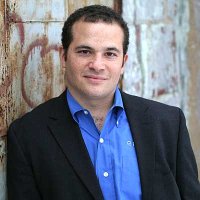Clean
the Hard Drive Before Dumping Your PC
By Kim Komando
Reprinted with permission
from the
Microsoft Small Business Center If you’re getting rid of
your old computer, or even if you aren’t just yet, there are some
things you should know about it. Chances are great
there’s sensitive data on it. If you’re like me, that PC’s hard
drive contains a compilation of your personal and business life. If
the wrong people were to grab it, they could hurt you and your
business very seriously.
Here’s the problem: An
index of files is maintained for the hard drive, telling it where
things are stored. When you install a file, especially a big one, it
is scattered around the hard drive in bits and pieces. On your
command to open the file, the hard drive checks the index, then
gathers the pieces and reconstructs them.
When that file is
deleted, the links between the index and the file disappear. That
tells your system that the file is no longer needed and that hard
drive space can be overwritten. But the deleted file remains on your
computer. Only when it is overwritten do you begin to be safe. Even
then, a specialist might be able to recover the old data.
Assuming you just
deleted everything in preparation for saying goodbye to your PC, it
is unlikely that the sensitive information has been overwritten.
It’s still sitting there, and anybody with a shareware program could
find it.
Do you trust the
recipient?
How you handle this really depends on where the computer is going.
If a trusted employee or your Aunt Minnie is getting it, you can
probably just delete stuff.
But be aware that if
you’re going to give the computer to a charity, you don’t know where
your machine will land. And if a neighborhood kid with a mean streak
and too much time on his hands gets it, you could have real
problems.
So here are my four
suggestions.
Don’t want a big
hassle? Give the computer to a trusted employee, friend or family
member.
If you trust who you give it to, I wouldn’t put a lot of effort into
destroying data. Recovering deleted data isn’t automatic. A thief or
con artist will have to get some specialized software and learn to
use it. Rivers of boring data would have to be sorted to find the
good stuff. The average (honest) person isn’t going to bother.
So if you give the PC
to someone you trust (careful now), you should simply delete the
files. More extensive work probably isn’t worth the effort. Just be
sure the recipient is honest. If he or she is shaky, go to the next
step.
Reformat the hard
drive and re-install the operating system.
Reformatting a disk prepares it to accept a new operating system. It
also wipes out everything on the hard drive. That’s your goal.
Past versions of
Windows (up through Windows Me) allow you to create a startup disk.
You’ll need one to reformat your hard drive. Click Start > Settings
> Control Panel. Double-click Add/Remove Programs. Click Startup
Disk. Click Create Disk.
On Windows XP, you’ll
need to download the disk information. Go to BootDisk.com and click
“DOS Windows 9X/NT4/2000/XP Excellent Bootdisks.” Download the
Windows XP Custom Install Disk and save it to a floppy.
On all systems, shut
down all open programs. Restart the computer with the floppy in
the A: drive. At the A: prompt, type Format: C. Answer “yes” to the
warning; you want to wipe out all the data. When the reformat
finishes, put the Windows installation CD in the CD drive and remove
the floppy. Restart and re-install Windows.
Reformatting will keep
most people out of your old files. But specialized shareware exists
to reclaim files after reformatting. If you do not know who will get
the computer or you do know and you don’t trust them stronger
measures are required.
Buy software and
overwrite the disk, again and again and again.
If you don’t know much about computers, this might be easier than
Step 2. There are several programs that write gibberish to the hard
drive. They promise that nobody will be able to find your files
after the software is utilized.
PC Inspector’s (www.pcinspector.de)
e-maxx meets U.S. military standards. Another good program is
DriveScrubber ($29.95), from Iolo Technologies (www.iolo.com). If
you have a Mac, try SuperScrubber (www.jiiva.com). It is $30, and
also meets military specs.
This process can be
slow, because these programs write to the disk repeatedly. You might
want to run it overnight.
You’re totally
paranoid, so get out the acetylene torch.
I’m not kidding. The only absolute and assured way of protecting
your data is to destroy the hard drive. To do that, you need to
remove it from the computer. If you want to save the rest of the
computer, touch the machine’s metal frame before reaching in. Static
electricity can wreck the circuitry.
The Pentagon shreds its
hard drives. That should work, assuming you can find a hard-drive
shredder. I’ve never seen one.
You need to destroy the
platters inside. Try smashing them with a hammer. Destroying them
with a torch should work.
Step 4 seems excessive
to me. But you’re right to be paranoid about this. Identity theft
has become overwhelming. There are a lot of people out there who
would love to hurt you. Personally, I would use Step 3. I believe in
being careful, no matter who gets the computer.













